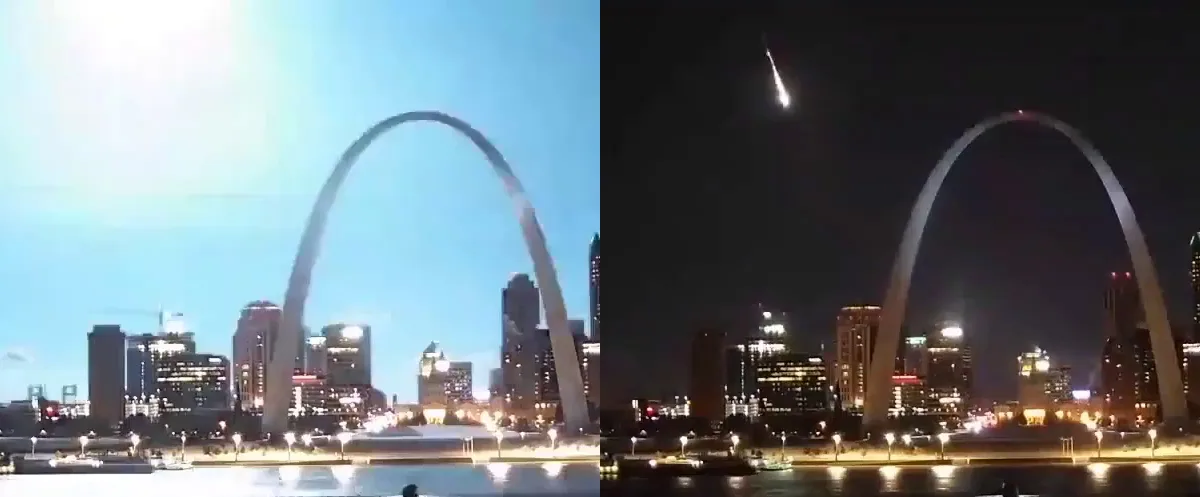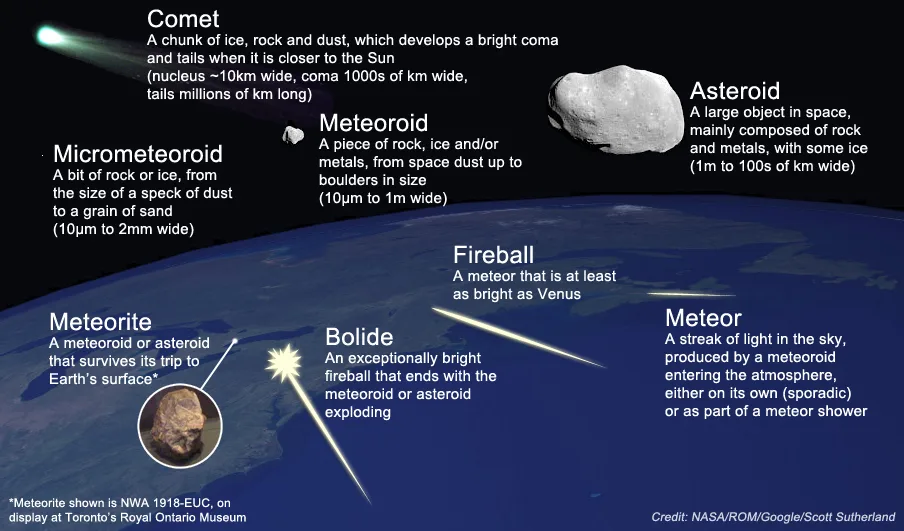
Blazing fireball turns night to day over St. Louis Monday night
This bright meteor fireball may have been an exceptional display put on by the Taurid meteor shower
At just before 9 p.m. Central Time on Monday, the sky over St. Louis, Missouri, lit up as if it was daytime again, as a spectacularly bright meteor fireball blazed by overhead.
As of Wednesday, the American Meteor Society had logged over 280 reports of the event, across 13 states, some from over 1,000 kilometres away. Reports came in from as far southwest as Oklahoma City, OK, and as far north as Minneapolis, MN.

This updated map from the AMS website from Tuesday, November 12, 2019, shows the concentrations of reports ('heat map') and the likely trajectory of the meteor, determined by comparing all the reports submitted. Credit: AMS/Scott Sutherland
Eyewitness reports of meteor fireballs are very important to the scientists who catalogue these events, simply due to the rarity of capturing one on video or in images. The increased use of cameras in urban settings is a major boon for this field of science, though. So far, this fireball was captured by three different cameras in the St. Louis area.
With the Northern Taurid Meteor Shower reaching its yearly peak Monday night, it is quite possible that this was an exceptional example of the fireballs this meteor shower can produce. The meteoroids that cause the yearly Taurids shower come from an asteroid known as 2004 TG10, which may have, at one time, been a piece of the comet known as 2P/Encke.
Estimating the size of the meteoroid that caused a fireball like this is not an easy task. Speed can be just as important as size when it comes to how bright a fireball is. This may have been anything from the size of a softball up to maybe a metre in diameter.
WHAT'S HAPPENING HERE?
These bright flashes of light across the sky are called meteors, and they occur when a meteoroid - a bit of rock or ice in space - gets directly in Earth's path as our planet orbits around the Sun.
When a meteoroid plunges into Earth's atmosphere, it is suddenly slowed from a speed of over 100,000 kilometres per hour, down to just a few hundred kilometres per hour in a matter of seconds. The intense energy of that change in velocity gets dumped into the air in the meteoroid's path, causing that air to compress and heat up dramatically until it glows brightly.

The size, speed and durability of meteoroid determines how bright of a meteor it produces and how long that meteor will last.
Most meteors last but a fraction of a second, as the intense heat from the compressed air vapourizes the meteoroid. Larger, tougher meteoroids produce very bright meteors, which we call 'fireballs'. If the meteoroid flares up and explodes during its bright flash through the sky, it is often called a 'bolide'.
The colour of the meteor often depends on the composition of the meteoroid, with green being a good indication that it is at least partially made of nickel.
In the case of this fireball over St. Louis, it most certainly exploded, as the bright light from it made it seem like daytime for just a moment. Looking closely at the video, we can see that it fragmented after that, with more than one piece continuing to produce the meteor glow before they blinked out.
Any pieces of this meteoroid that survived after that point will have simply fallen from the sky, somewhere off to the west-northwest of the point where the meteor went dark. If anyone manages to locate these fragments, they will be called meteorites.
Meteorites are not easy to spot for untrained eyes. Typical meteorites aren't large enough or travelling fast enough to produce a crater when they hit the ground. Also, although they are heated during their brief passage through the air, their cores can be intensely cold from their time in the vacuum of space. So, a freshly-fallen meteorite is more likely to be coated in a layer of frost than it is to explode or start fires.
Meteorites are often identified by the black 'fusion crust' that is scorched into their surface by the intense heat of their passage through the air. If the meteoroid broke apart in the air or as it hit, there may be a mix of dark fusion crust and bright exposed minerals along the surfaces of the fragments. Another tell-tale sign is that meteorites will stick to a magnet (even a typical refrigerator magnet) due to their high iron content.
If any meteorites are to be found from this spectacular fireball, it is possible that they fell along the meteor trajectory, as they fragmented from the main object. More fragments - possibly the largest of them - could be farther to the north-northwest, perhaps north Vandiver and Mexico, in Missouri. Remember, before you go looking for meteorites, anything found belongs to the owner of the property where they fell. Be aware of the local rules for finding these rare objects.
Sources: AMS | With files from The Weather Network






